Campervan Around Iceland: The Complete Road Trip Guide
If you’re dreaming of an Iceland adventure, there’s truly no better way than traveling by campervan around Iceland. A camper gives you the freedom to explore at your own pace, sleep under the stars, and wake up to glaciers, waterfalls, or black sand beaches right outside your door.
We’ve helped thousands of happy campers discover Iceland this way, and in this guide we’ll cover everything you need to know. From planning your route along the ring road, to staying warm during a cold night, to budgeting for campsites and fuel—this is your complete guide to a campervan trip you’ll never forget.

What You’ll Learn in This Guide
- How to plan your route — from the full ring road to side trips on the south coast and beyond.
- Where to stay — tips on choosing the best campsites and staying cozy during a cold night.
- Budgeting basics — what to expect for fuel, campsite fees, and extras along the way.
- When to go — the best seasons for chasing the northern lights or enjoying the midnight sun.
- Must-see stops — glaciers, waterfalls, black sand beaches, and hidden gems only reachable with a camper.
- Campervan tips — staying organized, cooking on the road, and making the most of your Iceland adventure.
Why Travel by Camper in Iceland?
Choosing a camper over a hotel or rental car means more than just saving money. It means flexibility. You don’t have to rush from place to place. If you see the northern lights suddenly dancing in the sky, you can pull over in a safe car park and enjoy the show. If you want to stay near waterfalls for a few nights, you can do that too.
A campervan in Iceland combines transport, sleeping space, and cooking facilities all in one. For many of our travelers, this kind of camping experience is what makes the trip in Iceland truly unique.
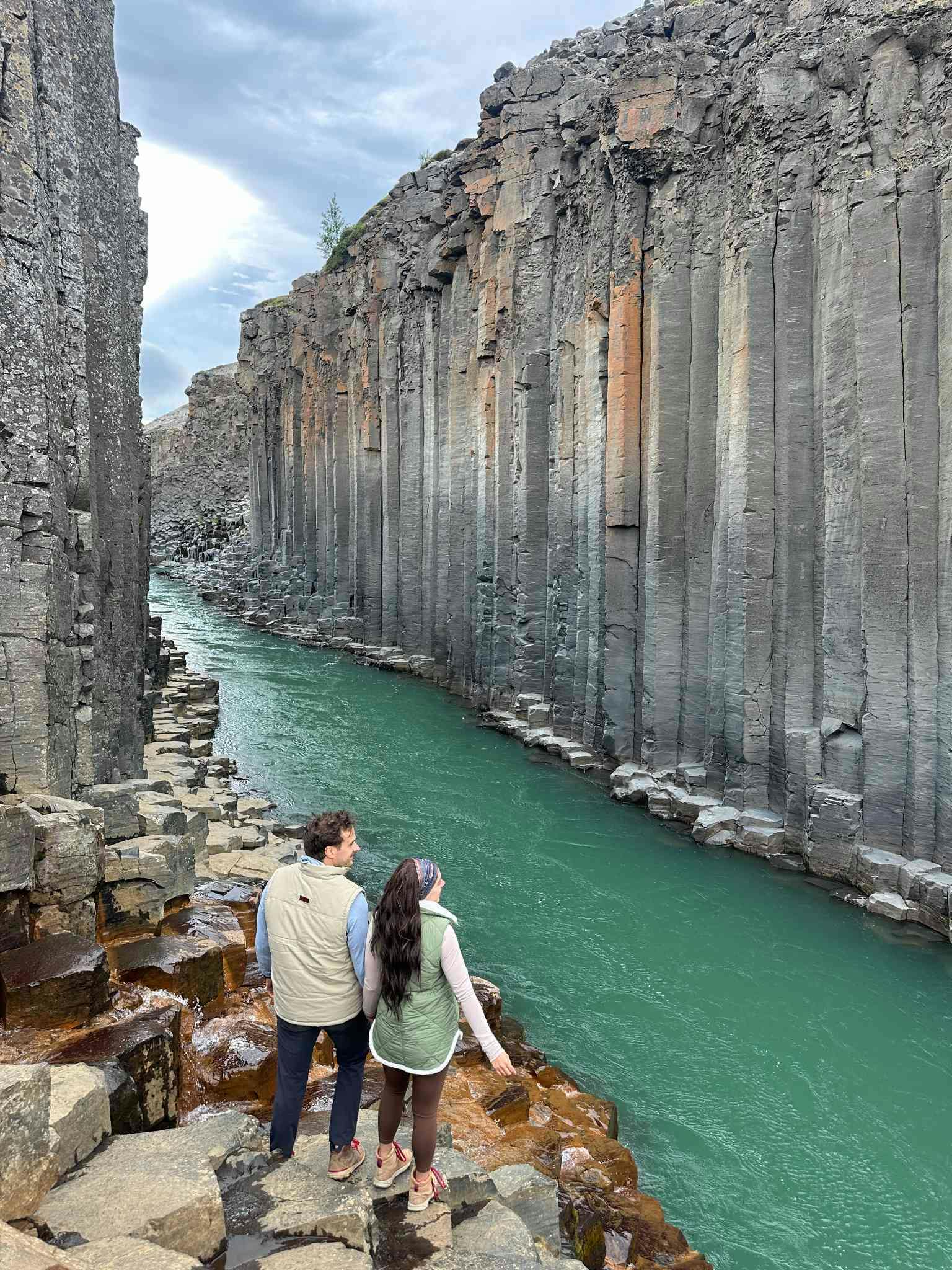
The Iceland Ring Road
The ring road is Iceland’s most famous drive. This 1,300 km loop circles the entire island, connecting nearly all of the country’s best sights. A full ring road trip usually takes about 7–10 days, but you can stretch it longer if you like to travel slowly.
Driving the iceland ring road in a camper means you’ll pass glaciers, fjords, lava fields, and remote fishing villages. Every day feels different. One morning you could be sipping fresh coffee while looking at geysers on the Golden Circle, and the next you’re taking a short walk on Diamond Beach while icebergs sparkle under the sun.
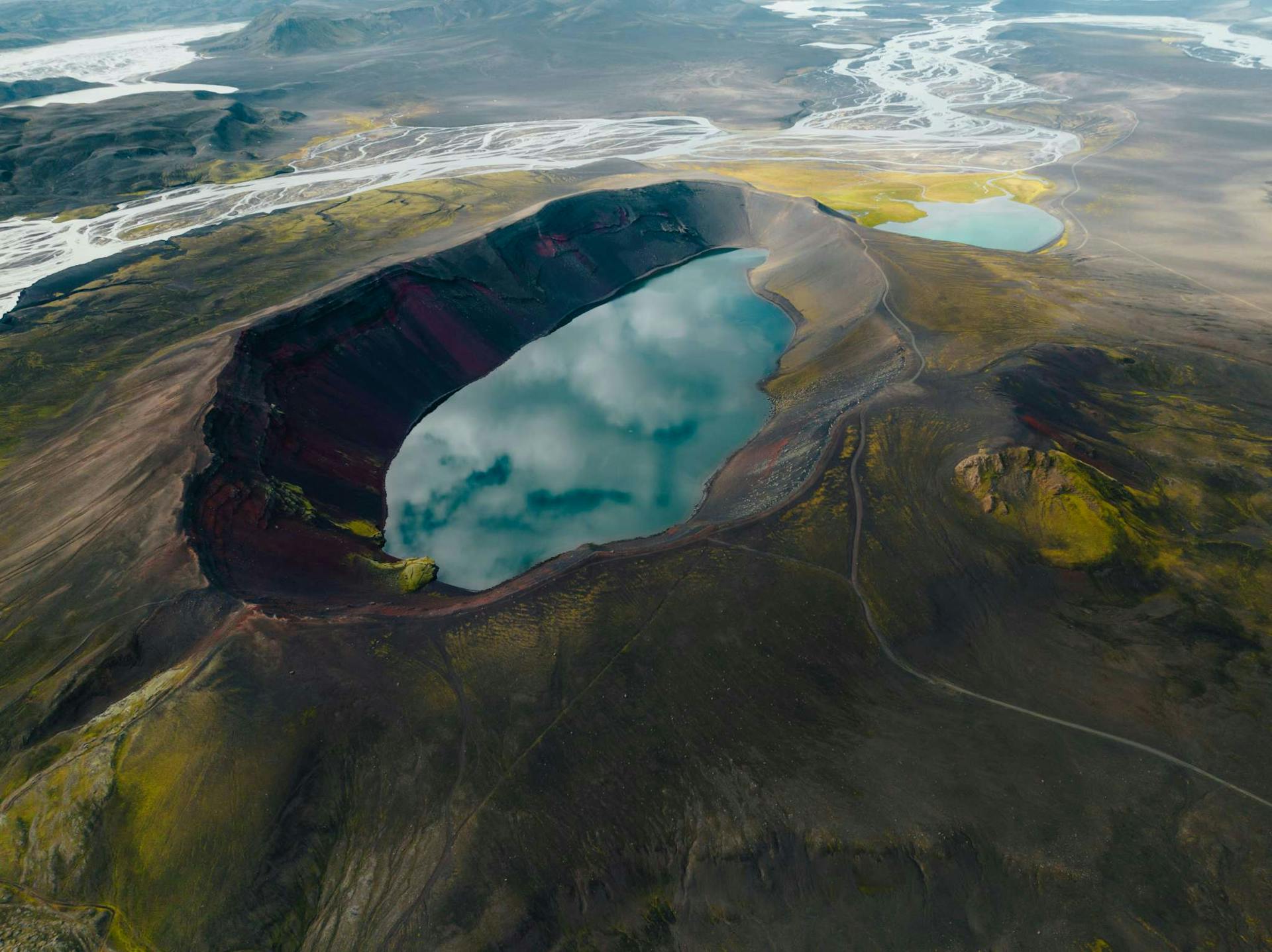
Key Stops on a Campervan Road Trip
One of the best parts about traveling in a camper is being able to stop wherever you like and take in Iceland’s most incredible sights at your own pace. Here are some must-see destinations to include on your journey:
Golden Circle
The Golden Circle is the classic introduction to Iceland, located just outside Reykjavik and perfect for your first day on the road. It includes:
- Geysir Geothermal Area: Watch Strokkur erupt every few minutes, sending boiling water into the sky.
- Gullfoss Waterfall: A powerful two-tiered waterfall that crashes into a canyon—it’s spectacular in both summer and winter.
- Þingvellir National Park: A UNESCO World Heritage Site, famous for its role in Iceland’s history and for being the place where two tectonic plates drift apart.
With your camper, you can stay overnight at nearby campsites, enjoy a hot shower, and return early in the morning before the crowds arrive.
South Coast
The south coast feels like another world. Driving along this stretch of the ring road takes you past dramatic cliffs, mossy lava fields, and waterfalls. Highlights include:
- Seljalandsfoss: Walk behind the curtain of water for a completely unique perspective.
- Skógafoss: A massive waterfall often framed by rainbows on sunny days.
- Reynisfjara Beach: Famous for its black sand, basalt columns, and roaring Atlantic waves.
This area is full of many campsites, so you can easily stay a few nights and explore without rushing.
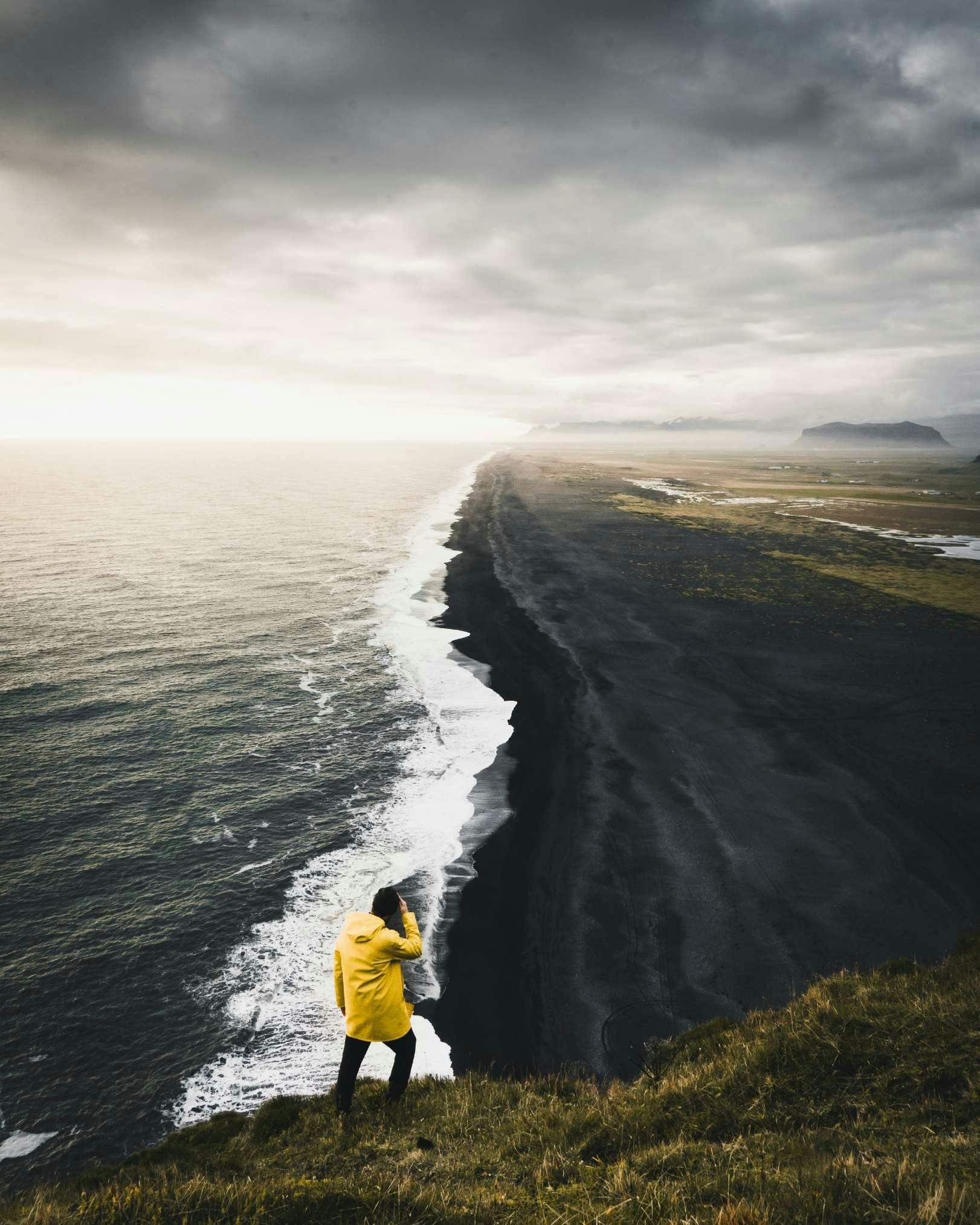
Skaftafell National Park
Part of Vatnajökull, Europe’s largest glacier, Skaftafell National Park is a paradise for hikers. You’ll find trails that range from short walks to glacier hikes led by guides.
The main campsite here is one of Iceland’s most scenic, with views of ice-capped peaks all around. Imagine waking up in your camper, grabbing a coffee, and starting your hike straight from the car park. Afterward, you can return to camp for a hot shower and a warm meal.
Diamond Beach
Right next to Jökulsárlón Glacier Lagoon, Diamond Beach is a sight you won’t forget. Icebergs drift out to sea and wash up on the black sand, sparkling like crystals in the sunlight.
You can park your camper nearby and walk down to the beach. Arriving at sunrise or sunset makes it even more magical, when the light turns the ice blue, pink, or gold. It’s one of the most photographed spots in Iceland, and for good reason.

East Iceland
While fewer tourists make it to east Iceland, those who do often say it’s their favorite part of the trip. The fjords are peaceful, wildlife is abundant, and the fishing villages feel authentic and welcoming.
Driving your camper through this region means you’ll have the freedom to explore at your own pace. Stop at small harbors, take a detour into the mountains, or spend the night at a campsite overlooking the ocean. It’s also a good chance to enjoy quieter remote corners of Iceland.
North Iceland
North Iceland is a hub of activity, especially around Akureyri, Iceland’s second-largest town. The area is known for:
- Whale watching in Húsavík: One of the best places in the world to see humpback whales, dolphins, and sometimes even blue whales.
- Goðafoss Waterfall: A wide, photogenic waterfall with historical importance.
- Northern Lights: In autumn and winter, the skies here are often alive with the aurora.
With several good campsites, you’ll have no problem finding places to stay. Parking your camper under the glowing sky makes for an unforgettable experience.
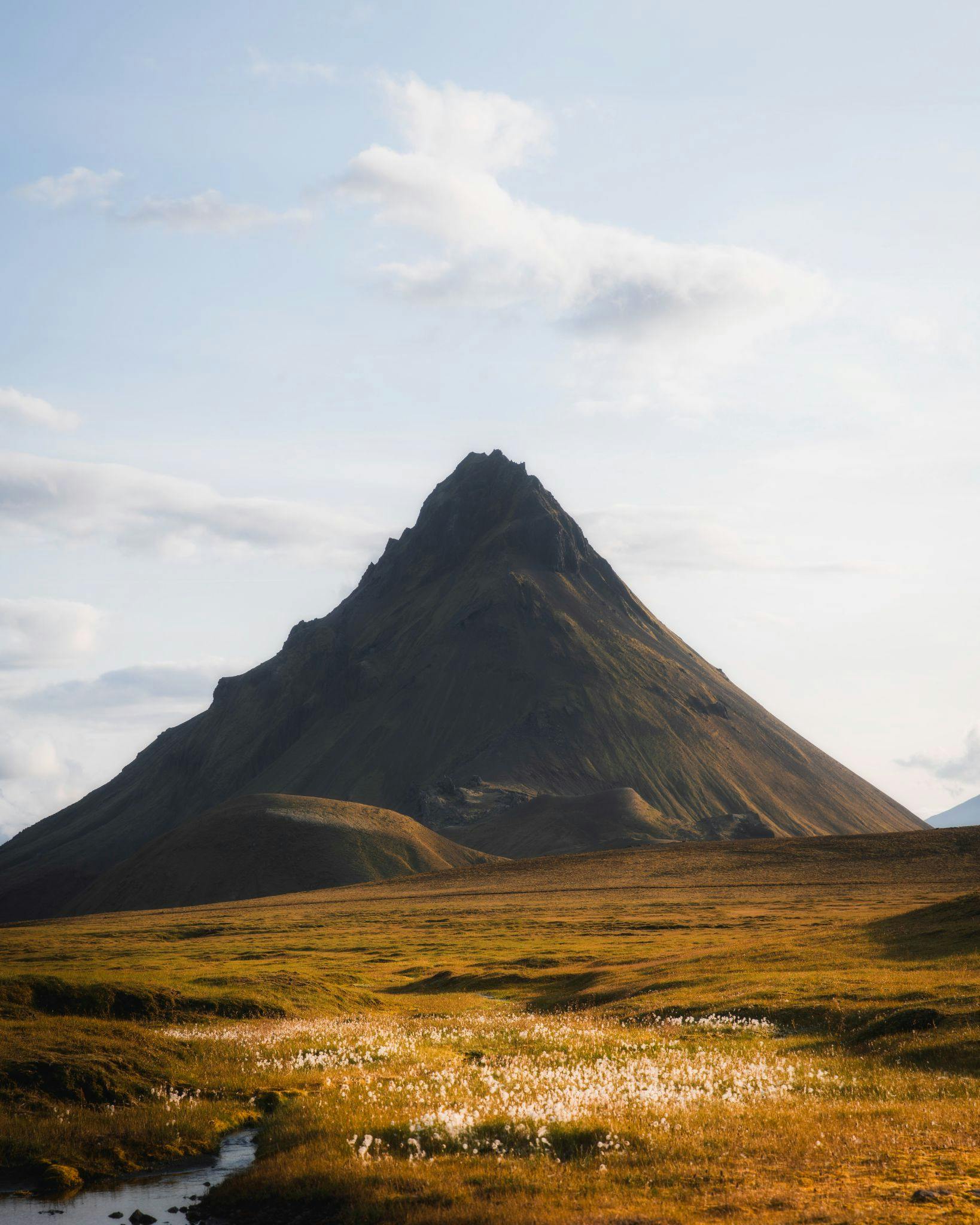
Remote Corners
One of the joys of having your own campervan is discovering places off the main tourist track. A few worth mentioning are:
- Fjaðrárgljúfur Canyon: A stunning green canyon with winding trails, perfect for photos and a short walk.
- Viking Café: A cozy stop on the east coast, popular with other campers looking for a break and a taste of Icelandic hospitality.
These kinds of spontaneous detours make a campervan road trip truly unique. You don’t have to stick to a schedule; you can explore these hidden gems whenever you feel like it.
Each of these stops has many campsites nearby, so you can recharge, cook a meal, and enjoy a hot shower before continuing your Iceland journey. Whether it’s iconic sites like Diamond Beach or quiet villages in east Iceland, your camper gives you the flexibility to experience it all.
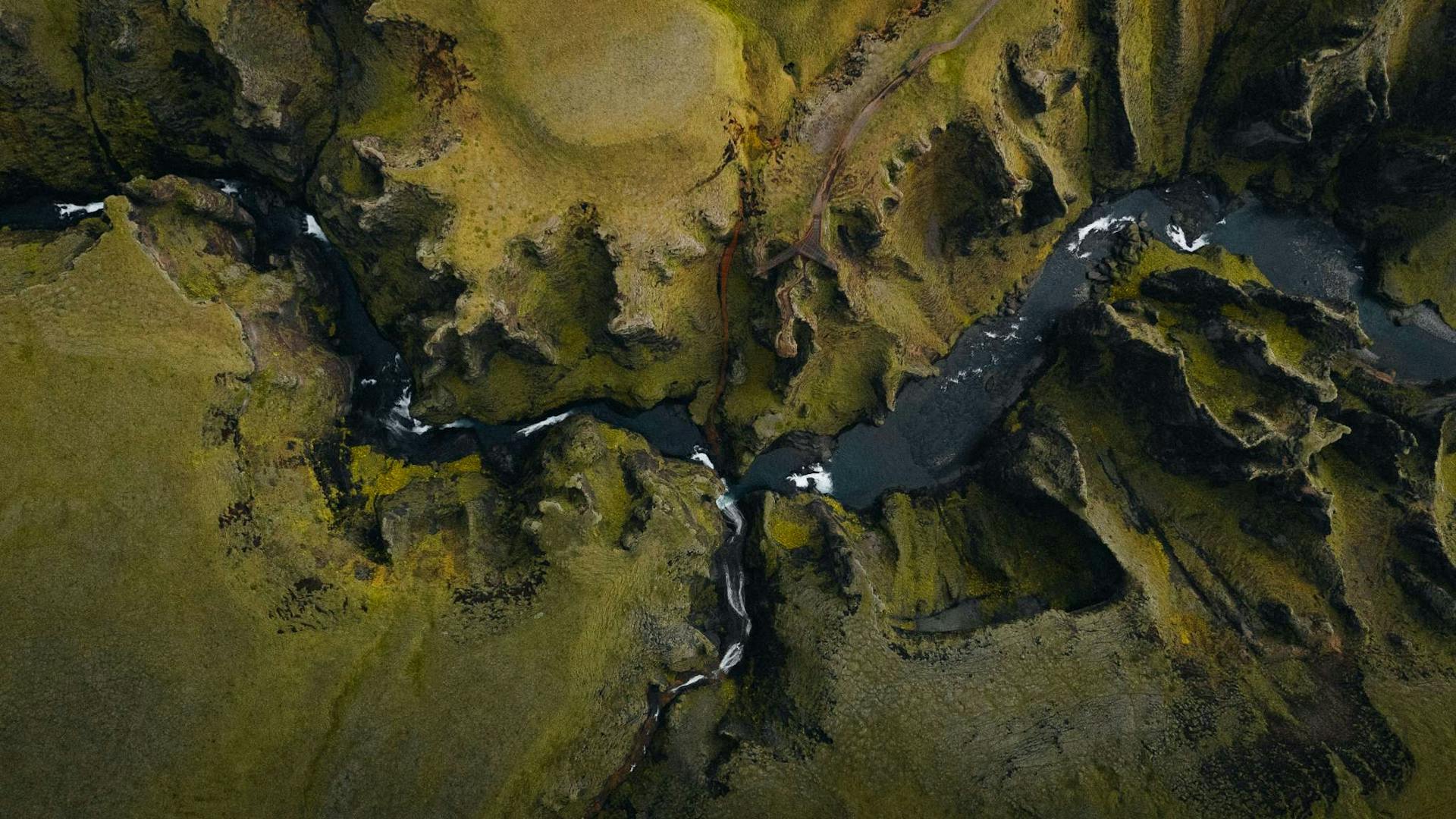
Campervan Rental Costs and Budgeting
The cost of campervan rental in Iceland depends on when you travel.
- Peak season (June–August) is the busiest and most expensive. Expect higher daily rates, more tourists, and longer days filled with sunlight.
- Off-season is cheaper, quieter, and great for catching the northern lights. You’ll just need to pack warmer gear like a sleeping bag and be ready for the occasional heavy rain.
On average:
- Budget campers start at around €70–€100 per day in the off season.
- Mid-range campers with a comfortable ride, cooking gear, and safety features are €120–€170 per day.
- Larger campers or a bigger van with more space can go up to €200+ per day.
Don’t forget extras like fuel, food, and campsite fees. While wild camping isn’t allowed, staying at campsites is affordable compared to hotels.
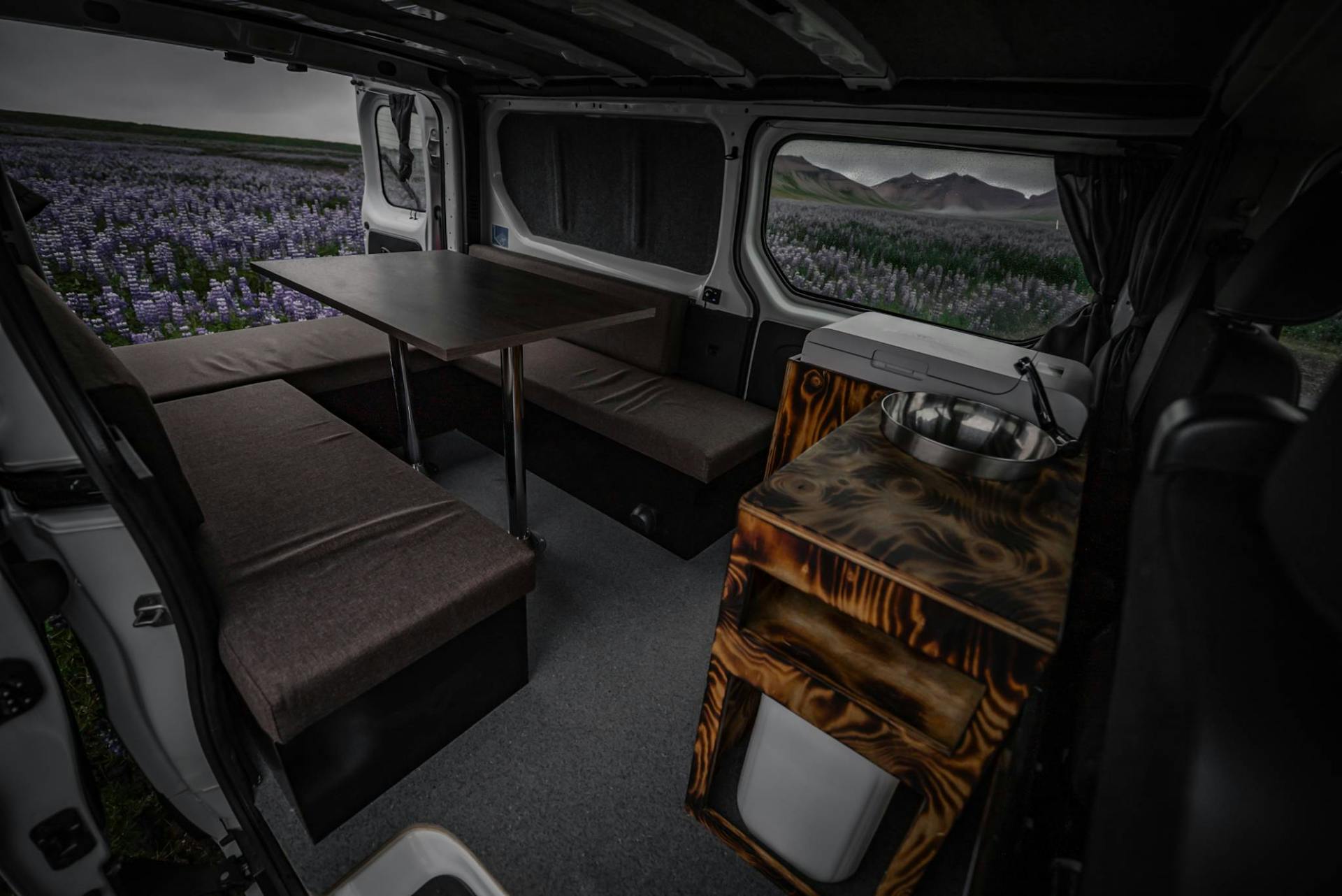
Camper vs Rental Car
A lot of people wonder: why not just take a rental car? The answer is simple. A camper combines two costs into one: transport and accommodation. That means you don’t need to worry about booking hotels or guesthouses along the way.
Plus, staying in a camper feels more adventurous. You get to wake up with views hotels can’t offer. And with unlimited mileage included in our rentals, you don’t need to stress about how far you drive.
Driving a Campervan in Iceland: What You Need to Know
Paved Roads, Gravel Roads, and Mountain Passes
Iceland’s road system is straightforward, but it changes quickly. You’ll drive mostly on paved roads along the ring road, which are easy to handle even for new drivers. However, you’ll also encounter gravel roads that can be bumpy and sometimes covered in loose stones.
When driving a camper here, slow down on gravel to avoid damage. While our vehicles are sturdy, they are not 4x4s and not meant for F roads or highland roads. Those require a four wheel drive vehicle, which we don’t offer. Still, you’ll have more than enough to see and experience without ever leaving the main roads.
Crossing a mountain pass can be thrilling but remember to always check the weather forecast before heading out. A sunny day can turn into heavy rain quickly, and fog can lower visibility on higher routes.
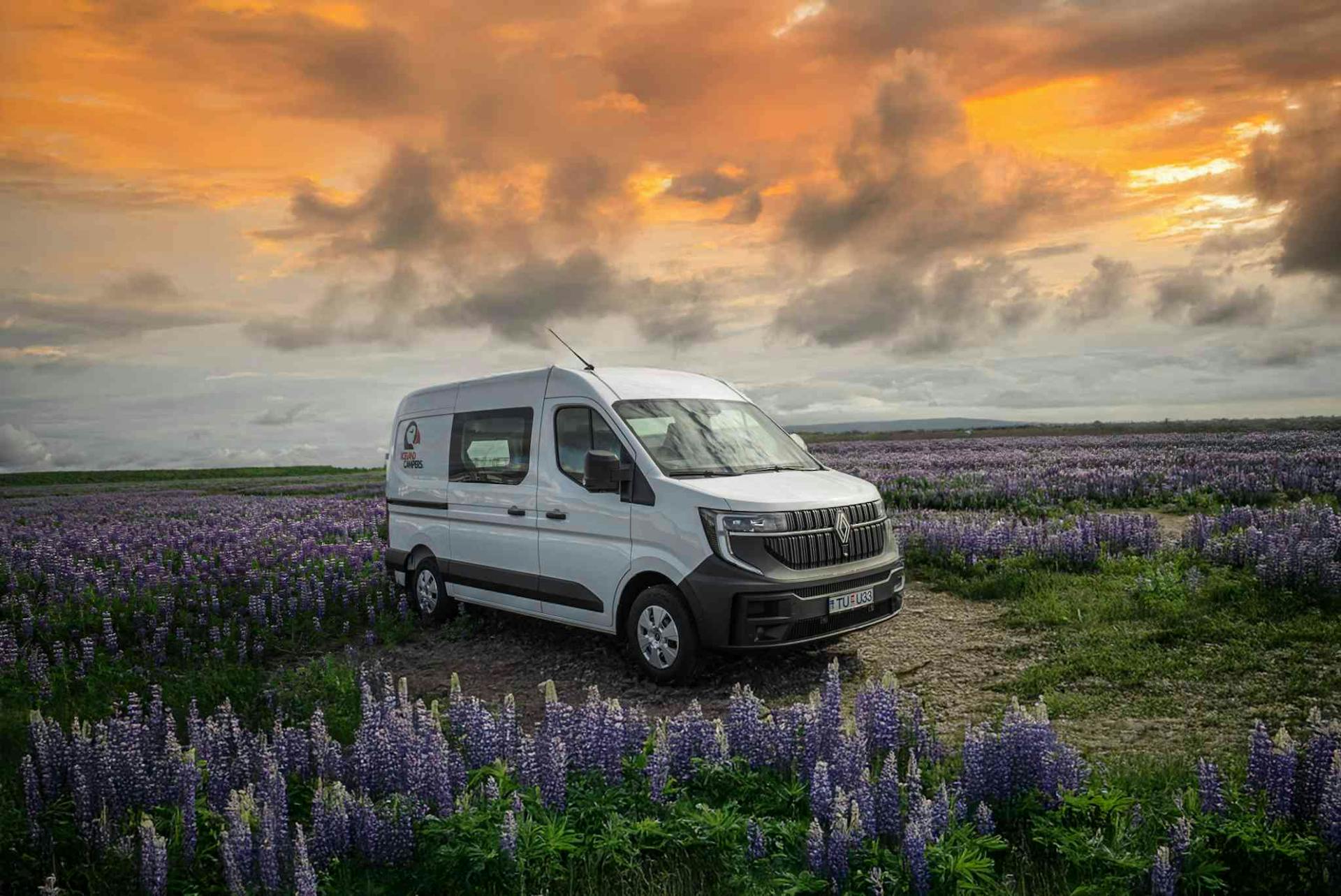
Speed Limits and Safety Features
The general speed limit in Iceland is 90 km/h on paved rural roads, 80 km/h on gravel, and 50 km/h in towns. Sticking to these speeds isn’t just about following the law—it’s about keeping safe on unpredictable roads.
Our campers are equipped with modern safety features to give you peace of mind, and with unlimited mileage, you can take your time without rushing. Remember, it’s always better to arrive late than to risk driving too fast on narrow or winding roads.
Staying Warm and Comfortable in Your Camper
Sleeping Bags and Cold Nights
Icelandic weather changes fast, even in summer. A cold night in June can still drop near freezing. That’s why we recommend bringing or renting a sleeping bag. We offer them as an add-on, and many of our happy campers say they were the most valuable extra they chose.
A camper’s heating system keeps the inside cozy, but sleeping bags give extra warmth and comfort, especially if you like to sleep with the windows cracked for fresh air.
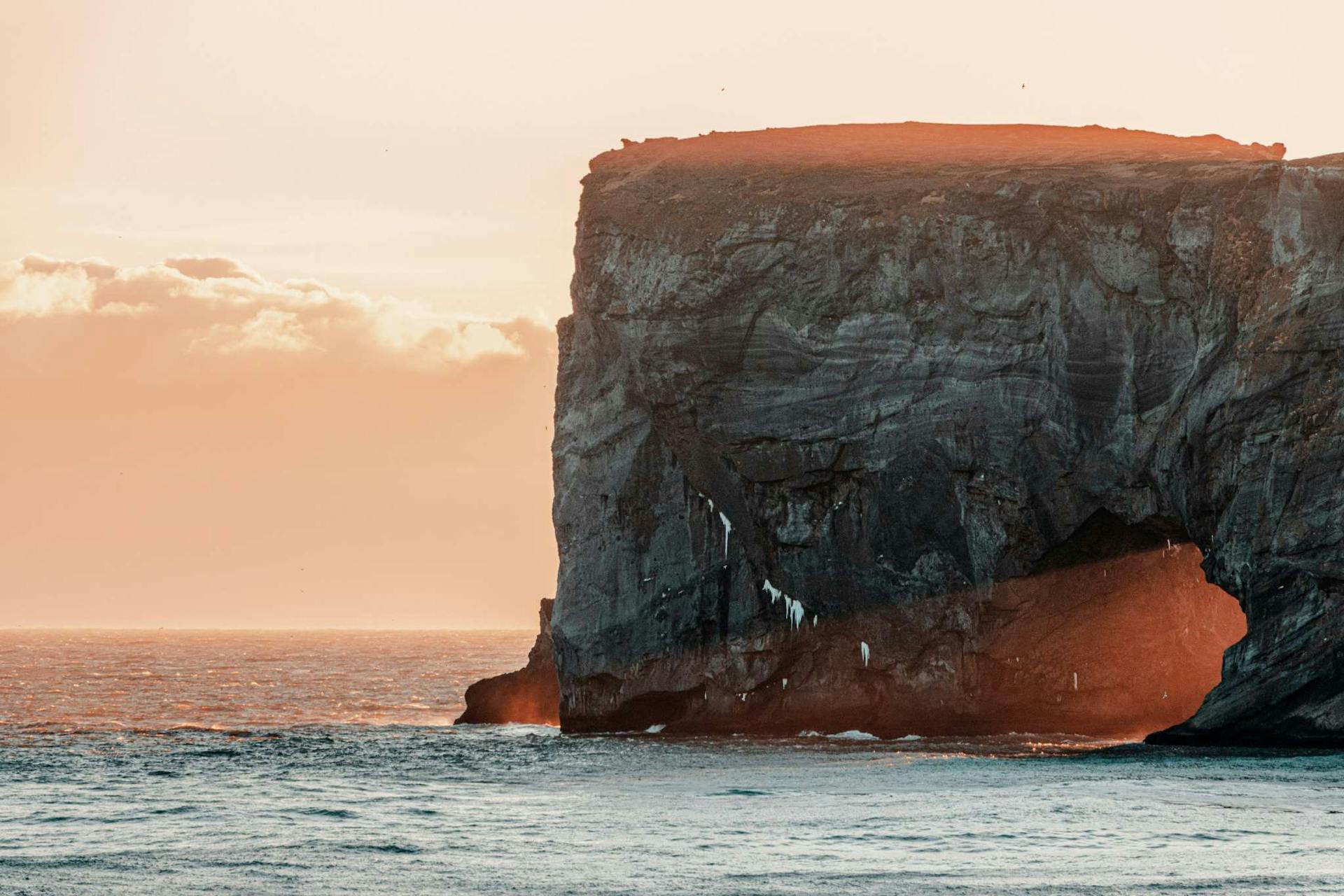
Handling Wet Clothes and Heavy Rain
At some point on your trip, you’ll likely get caught in heavy rain. Maybe it’s after hiking in Skaftafell National Park or exploring Fjaðrárgljúfur Canyon. The best trick is to pack smart: bring quick-dry clothing and keep wet clothes in a sealed bag until you can hang them at a campsite.
Many campsites also offer laundry facilities, and it’s worth planning one or two wash stops if you’re doing a longer trip in Iceland.
Daily Camper Life: From Gas Stations to Hot Showers
Gas Stations and Refueling
You’ll quickly get used to stopping at a gas station every few days. Iceland’s stations aren’t just for fuel; they often have small shops, snacks, and sometimes even free Wi-Fi. It’s also the perfect place to grab a cup of fresh coffee before hitting the road again.
Some travelers use gas stations as mini supply points, picking up essentials before heading into more remote corners.

Campsites and Facilities
You’ll find many campsites scattered along the ring road. Prices are affordable compared to hotels, and most campsites offer showers, kitchens, and charging stations. A hot shower after a long day of hiking or driving feels incredible.
However, not all campsites have the same facilities. Some are simple fields with toilets and sinks, while others are well-equipped with indoor kitchens and lounges. That’s part of the adventure—you never know exactly what you’ll get until you arrive.
Power Banks and Charging Devices
Most campers include USB charging points or a cigarette lighter for plugging in devices, but if you carry multiple electronics, bring a power bank as backup. Many of our happy campers mention this as a lifesaver, especially when camping in remote corners where outlets are limited.
Keeping your phone charged is essential not just for photos, but also for checking maps, the weather, or aurora forecasts during northern lights season.
Cooking and Storage Space
One of the best parts of traveling in a camper is being able to cook your own meals. Each of our vans comes with basic cooking gear, and you can add extras like a camping table or extra storage space if you need it.
Cooking at a campsite also helps you save money, since eating at restaurants in Iceland can get expensive. Plus, nothing beats sharing a meal with other campers, swapping stories of waterfalls, volcanoes, and long drives.
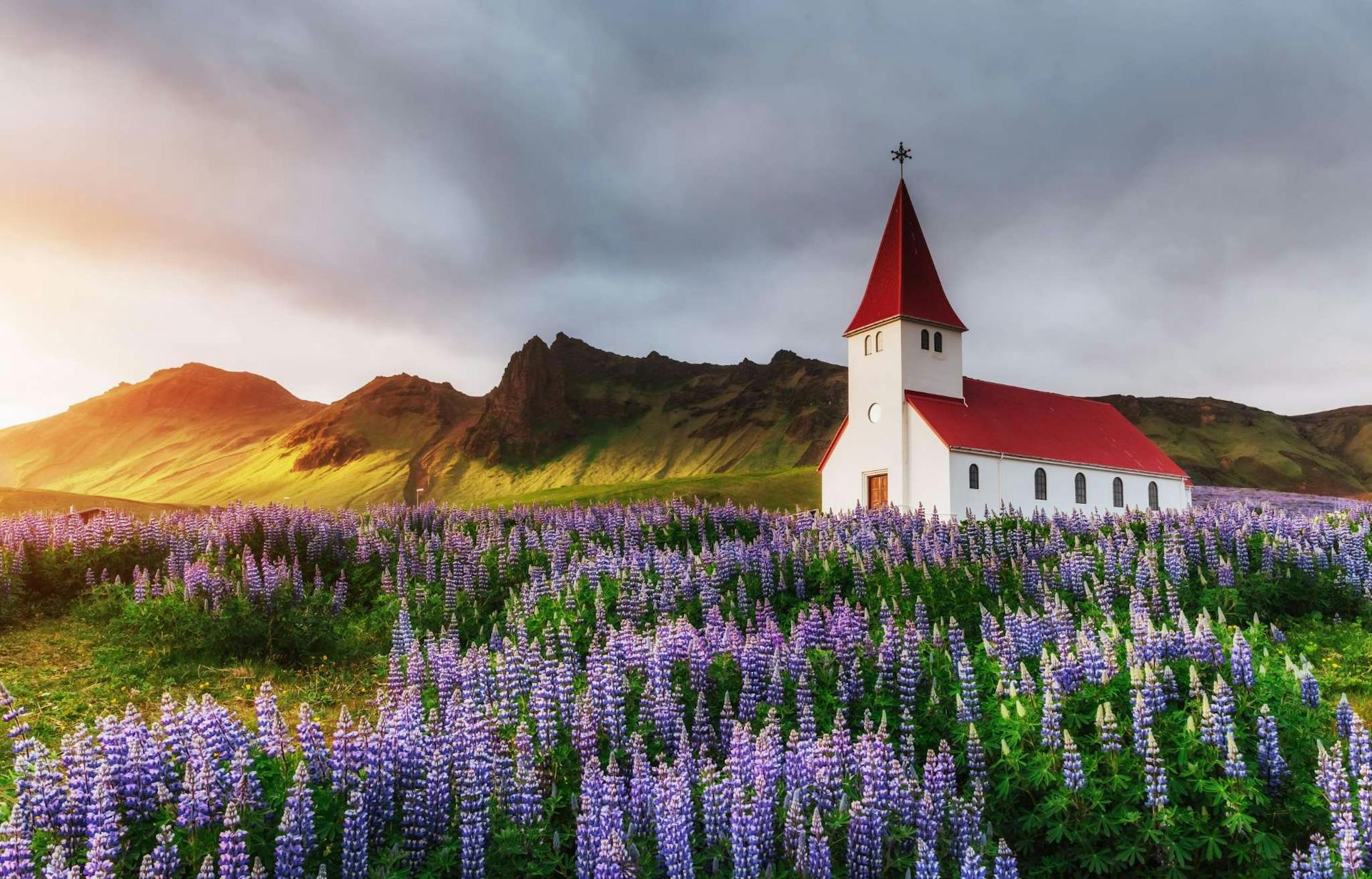
Flip Flops and Campsite Comfort
Here’s a small but useful tip: bring flip flops. Walking between your camper and the showers or kitchen blocks is so much easier when you can slip on sandals. After a night long drive or a cold night in the van, small comforts like this make a big difference.
Scenic Highlights for Camper Travelers
Reynisfjara Beach
Located on the south coast, Reynisfjara is one of Iceland’s most famous spots. The black sand, basalt columns, and crashing waves create an unforgettable view. It’s a short drive from Vík, where you’ll find campsites and a few cozy cafés.
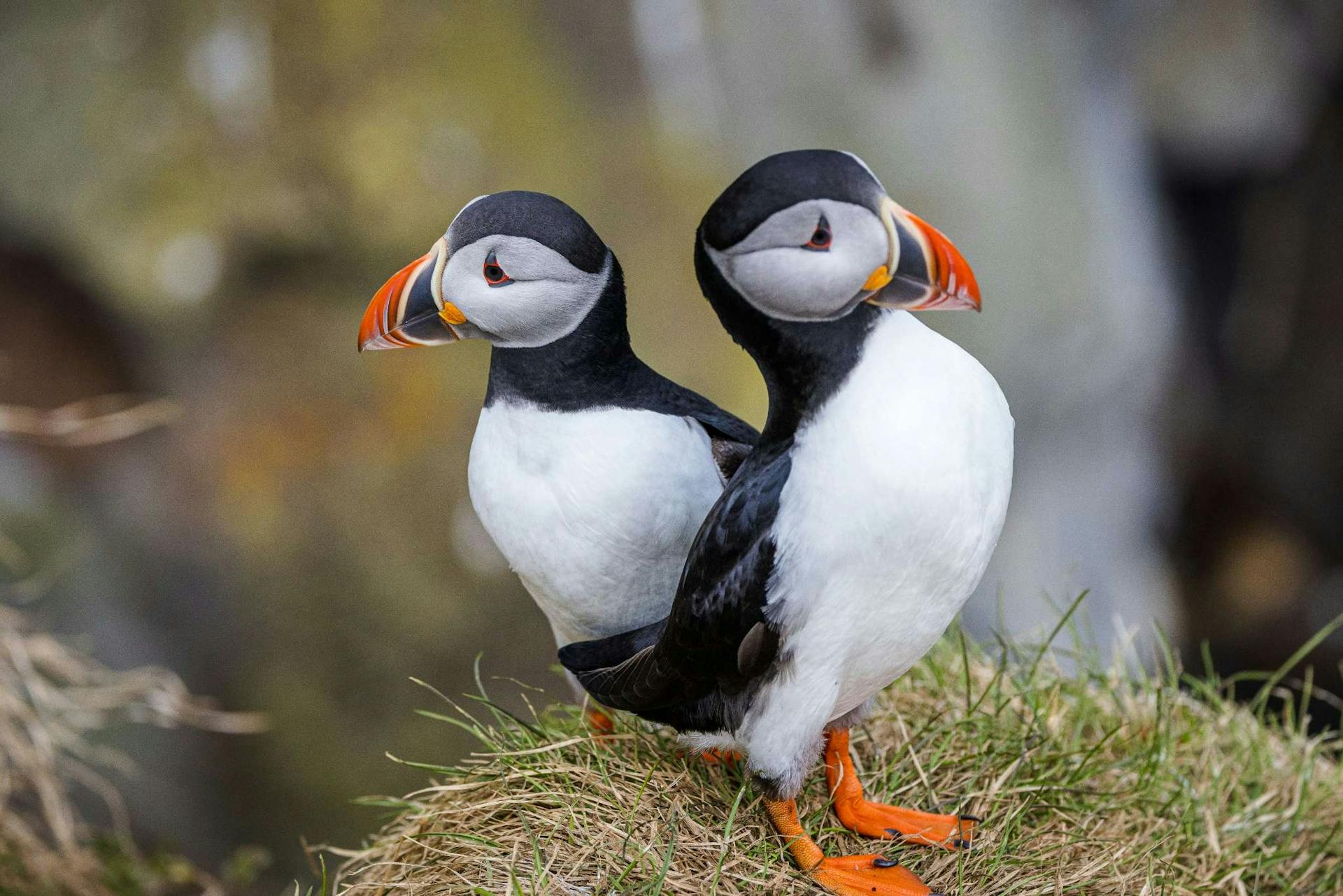
Fjaðrárgljúfur Canyon
This canyon feels like something out of a fantasy movie. It’s a short walk from the parking area and perfect for stretching your legs after hours on the road. With steep cliffs and winding paths, it’s one of the best photo stops on the iceland ring road.
Skaftafell National Park
Part of Vatnajökull, Skaftafell is full of hiking trails, waterfalls, and glaciers. It’s also one of the most camper-friendly spots, with campsites right in the park. Spending a few days here gives you time to explore the landscape fully.
Diamond Beach
No iceland road trip is complete without a stop at Diamond Beach. Here, icebergs that break off from Jökulsárlón Glacier Lagoon wash up on the black sand, sparkling like jewels in the sunlight. If you arrive early in the morning or late in the evening, you might even have the beach to yourself.
East Iceland and Remote Corners
Many travelers rush through East Iceland, but if you have the time, it’s worth slowing down. The fjords are peaceful, the roads are quiet, and the small fishing villages feel authentic and welcoming.
Driving here in your own campervan gives you access to places tour buses skip. It’s one of those areas where you’ll feel the true magic of exploring at your own pace.
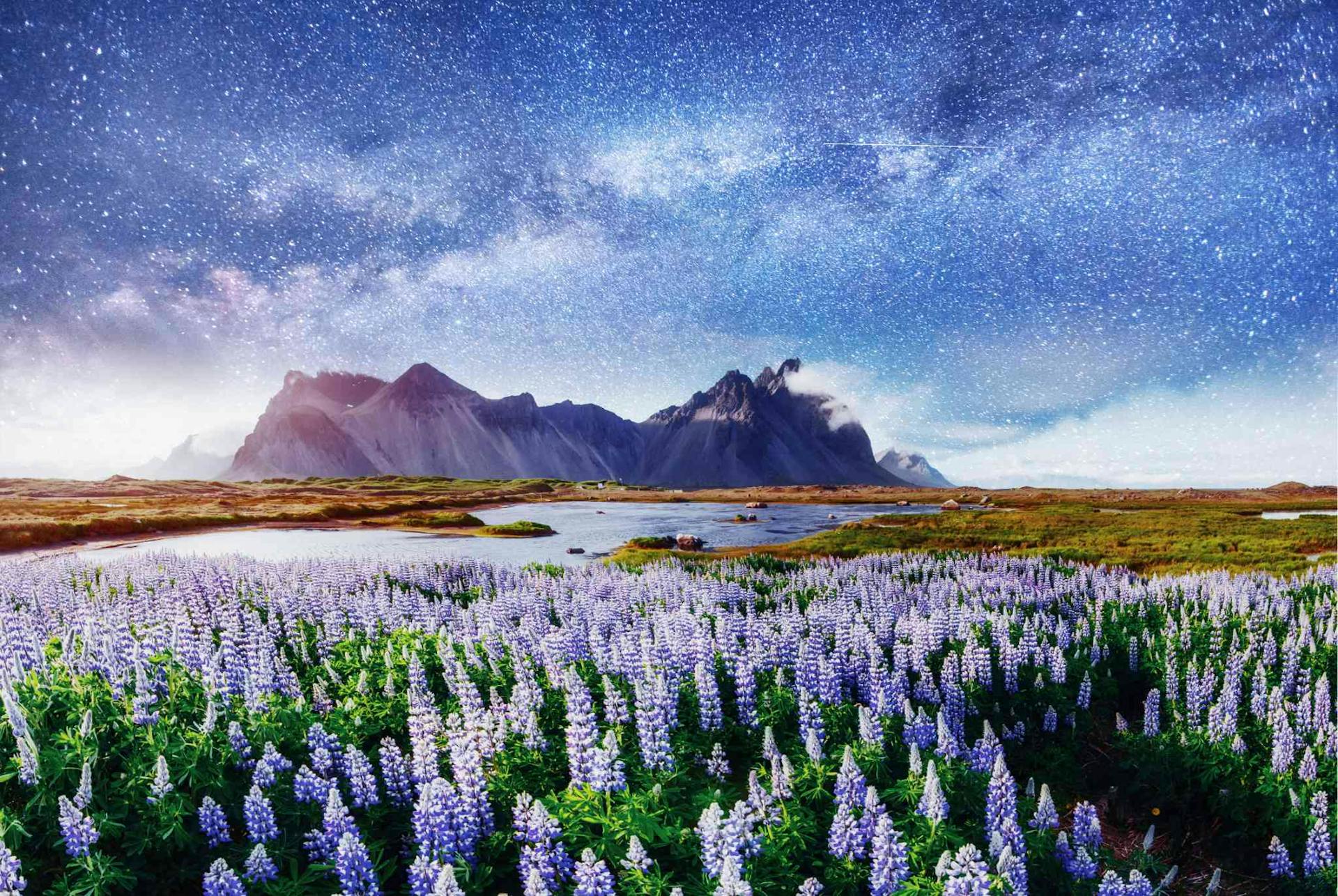
Viking Café Stop
Near the east, you’ll find the quirky Viking Café, a perfect place for a break. Many happy campers tell us it’s one of their favorite roadside stops. Whether you’re grabbing a coffee or just stretching your legs, it’s a reminder that Iceland isn’t just about landscapes; it’s also about the little surprises along the way.
FAQs About Campervans in Iceland
Can You Sleep Anywhere in a Campervan in Iceland?
No, wild camping is not permitted. You can’t simply pull off the road and sleep wherever you like. Instead, you need to stay at official campsites, which are plentiful and spread across the island. From the south coast to east Iceland, you’ll always find a safe and legal place to park overnight.
Most campsites offer bathrooms, kitchens, and even the occasional hot shower. Some are simple grassy fields, while others are full-service sites with lounges and cooking huts. Not all campsites are the same, but that’s part of the adventure.
Is It Worth Getting a Campervan in Iceland?
Absolutely. Renting a camper is one of the smartest choices you can make for your Iceland trip. Instead of juggling hotel bookings and a rental car, your camper combines transport and accommodation in one.
With your own campervan, you’ll experience Iceland at your own pace. Want to stop at Diamond Beach to watch the sunrise? You can. Want to chase the northern lights late at night? Your bed is already with you when you’re done. That kind of freedom is priceless.
How Many Days Do You Need to Camper Van Around Iceland?
Most travelers spend about 7–10 days driving the ring road trip. This allows time to stop at waterfalls, volcanoes, and remote corners without rushing.
If you only have a few days, you can still enjoy shorter trips, like exploring the Golden Circle or Skaftafell National Park. If you have two weeks, you’ll be able to go slower, hike more, and enjoy a night long under the stars without worrying about time.
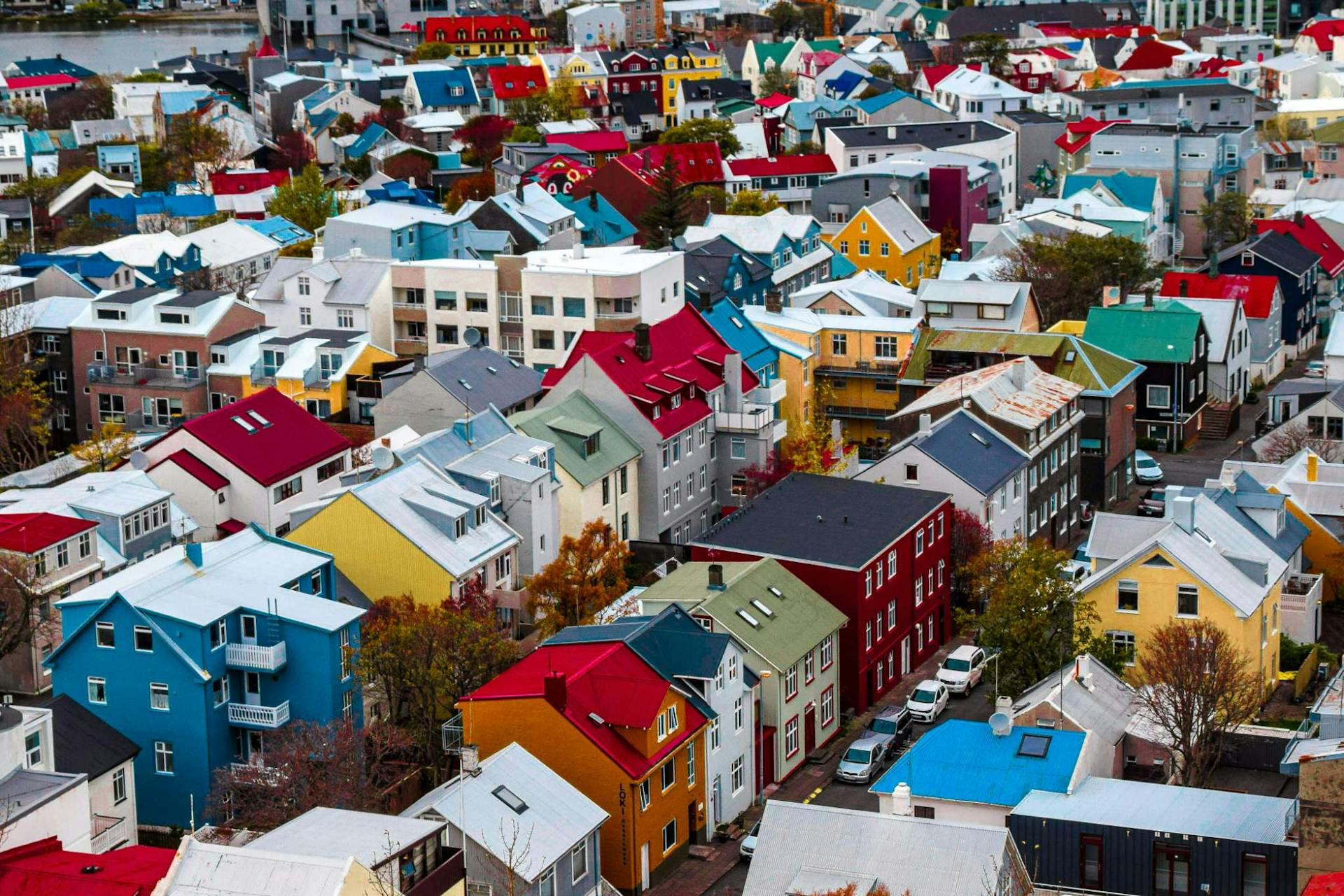
Is It Easy to Drive a Campervan in Iceland?
Yes, but you need to be cautious. Driving a campervan in Iceland feels different from a small rental car. Campers are larger, so you’ll need to take turns more carefully and watch your speed.
The main paved roads are well maintained, but some areas have gravel roads or mountain passes. Avoid F roads and highland roads; our campers are not 4x4 vehicles. Stick to the safe routes, follow the posted speed limit, and you’ll have a smooth journey.
Staying Connected on the Road
Even though you’ll spend a lot of your trip in Iceland surrounded by mountains and glaciers, you’ll still want to stay connected. Here’s how:
- Bring a power bank for charging devices when you’re away from campsites.
- Use the camper’s cigarette lighter to charge while driving.
- Stop at a gas station to top up devices or grab Wi-Fi when available.
Most travelers combine these methods, and it works fine. Just remember, signal may be weaker in remote corners, so download maps in advance.
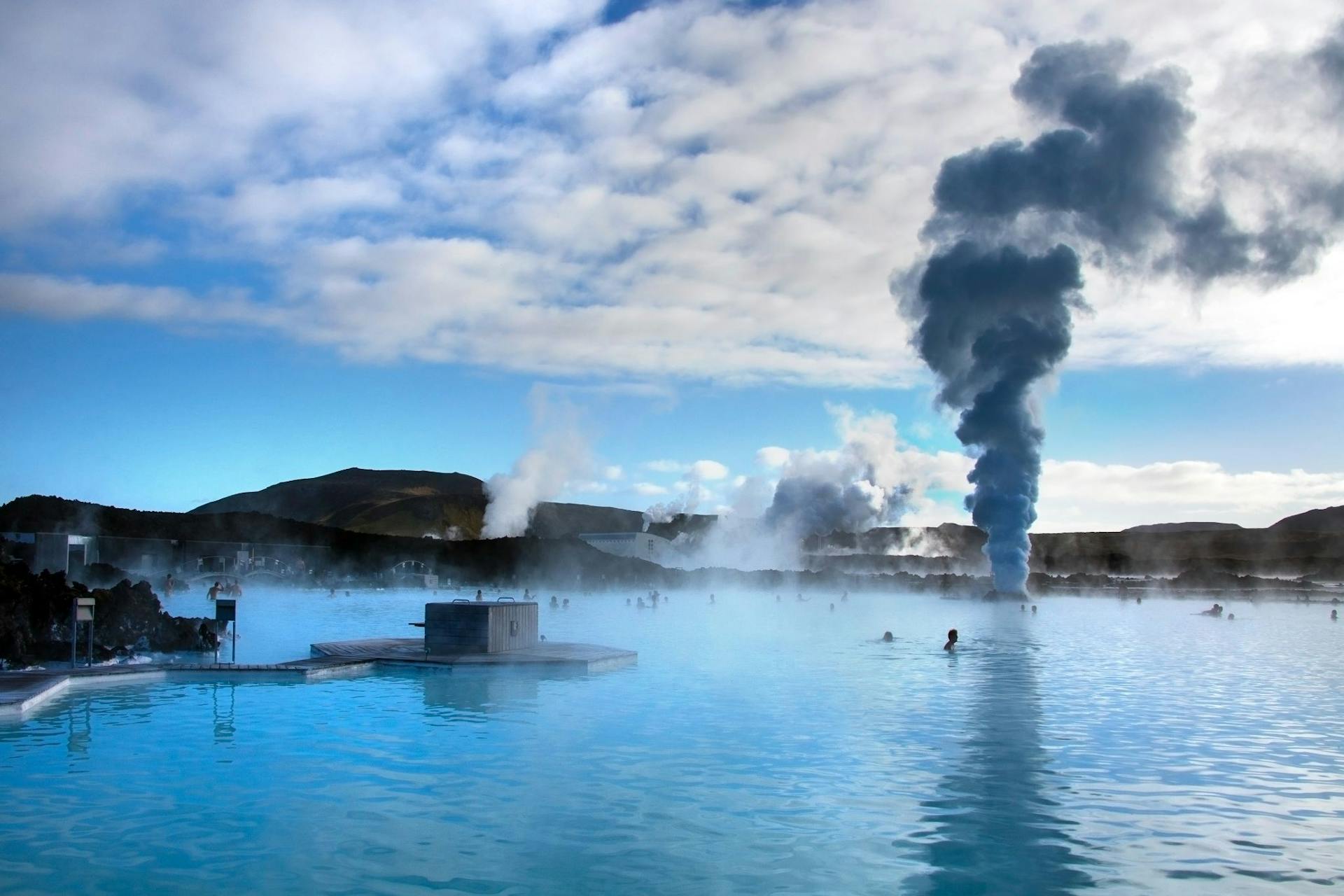
Stories From Happy Campers
We’ve seen so many journeys start and end with smiles. Here are a few experiences our travelers have shared:
- A couple drove the iceland ring road in September, caught the northern lights three nights in a row, and said their sleeping bag was the coziest thing they packed.
- A family rented a bigger van with extra storage space and said it was the most comfortable ride they’ve ever had. Their kids loved waking up near waterfalls and roasting marshmallows at a campsite.
- Two friends decided to skip hotels, stayed at many campsites instead, and said they felt more freedom than any other trip they’d taken before.
These are the kinds of memories that make camper travel special. Once you’ve done it, you understand why we hear “best trip ever” so often.
When to Plan Your Camper Trip
Peak Season vs Off-Season
- Peak season (June–August): Long days, warmer weather, and busy campsites. Great for first-timers.
- Off season (spring or autumn): Cheaper, quieter, and better for spotting the northern lights. Just be ready for a cold night or two and pack a proper sleeping bag.
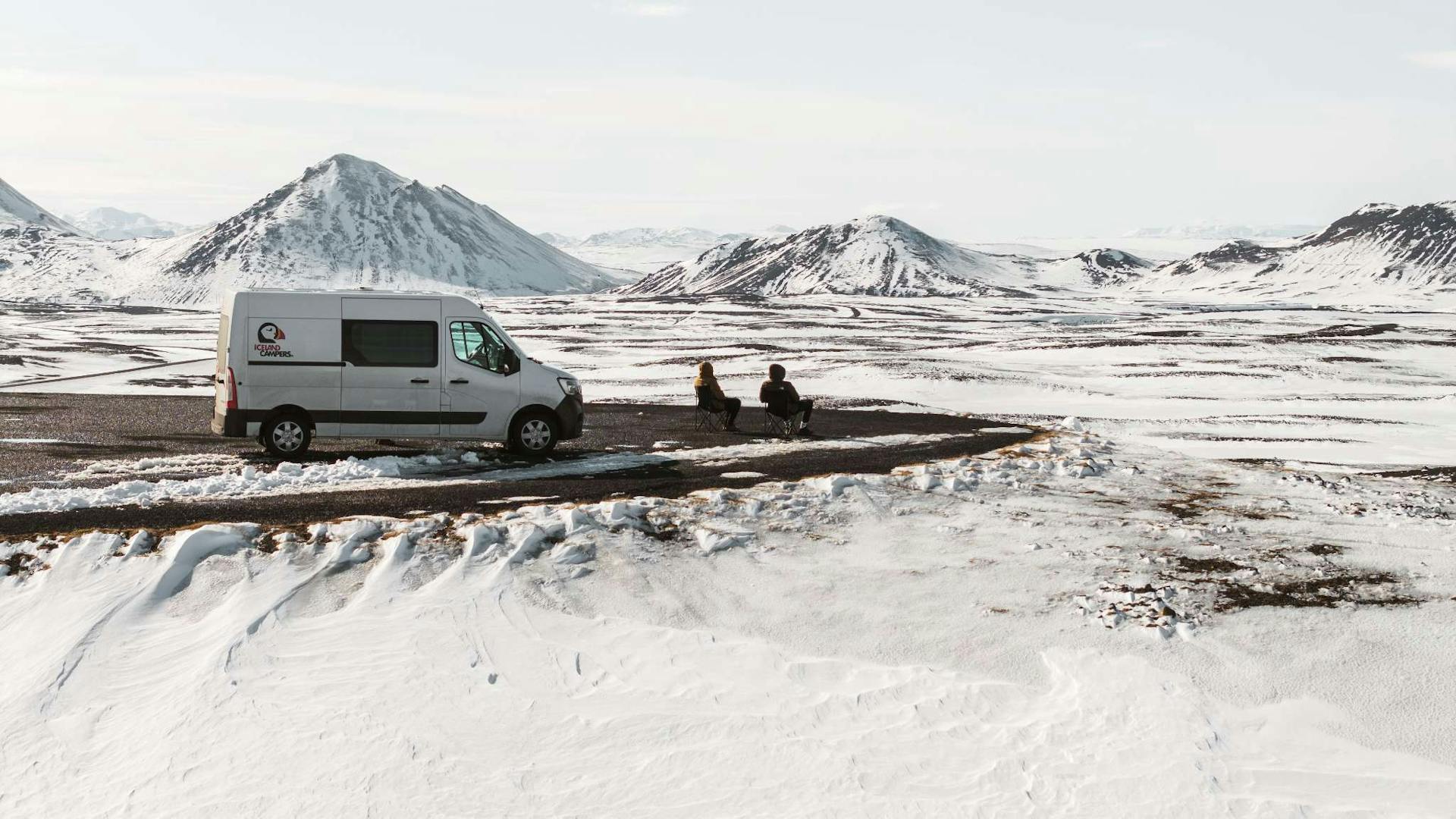
Chasing the Northern Lights
The northern lights are one of Iceland’s greatest treasures. With your camper, you can chase clear skies using the weather forecast, pull into a parking area, and wait for the sky to light up. Pack flip flops for quick dashes outside and a thermos of fresh coffee to keep you warm.
Some nights you’ll see the aurora swirl for hours. Other nights it may appear for just a few minutes. Either way, it’s an unforgettable moment.
Extra Tips for a Smooth Campervan Trip
- Roof tent vs camper: Some travelers choose a roof tent on a car, but we recommend a full camper for warmth, storage, and comfort. A tent might sound fun, but when it’s raining or windy, you’ll be grateful for solid walls.
- Gas station planning: Fill up often—distances between stations can be longer than you expect.
- Stay warm: Layer clothing, keep blankets or a sleeping bag handy, and always dry wet clothes before heading to bed.
- Campsite etiquette: Clean up, respect other campers, and follow the rules. Iceland takes its environment seriously.
- Unlimited mileage: Take advantage of it. Whether you’re circling the whole island or just exploring east Iceland, you won’t have to worry about distance limits.
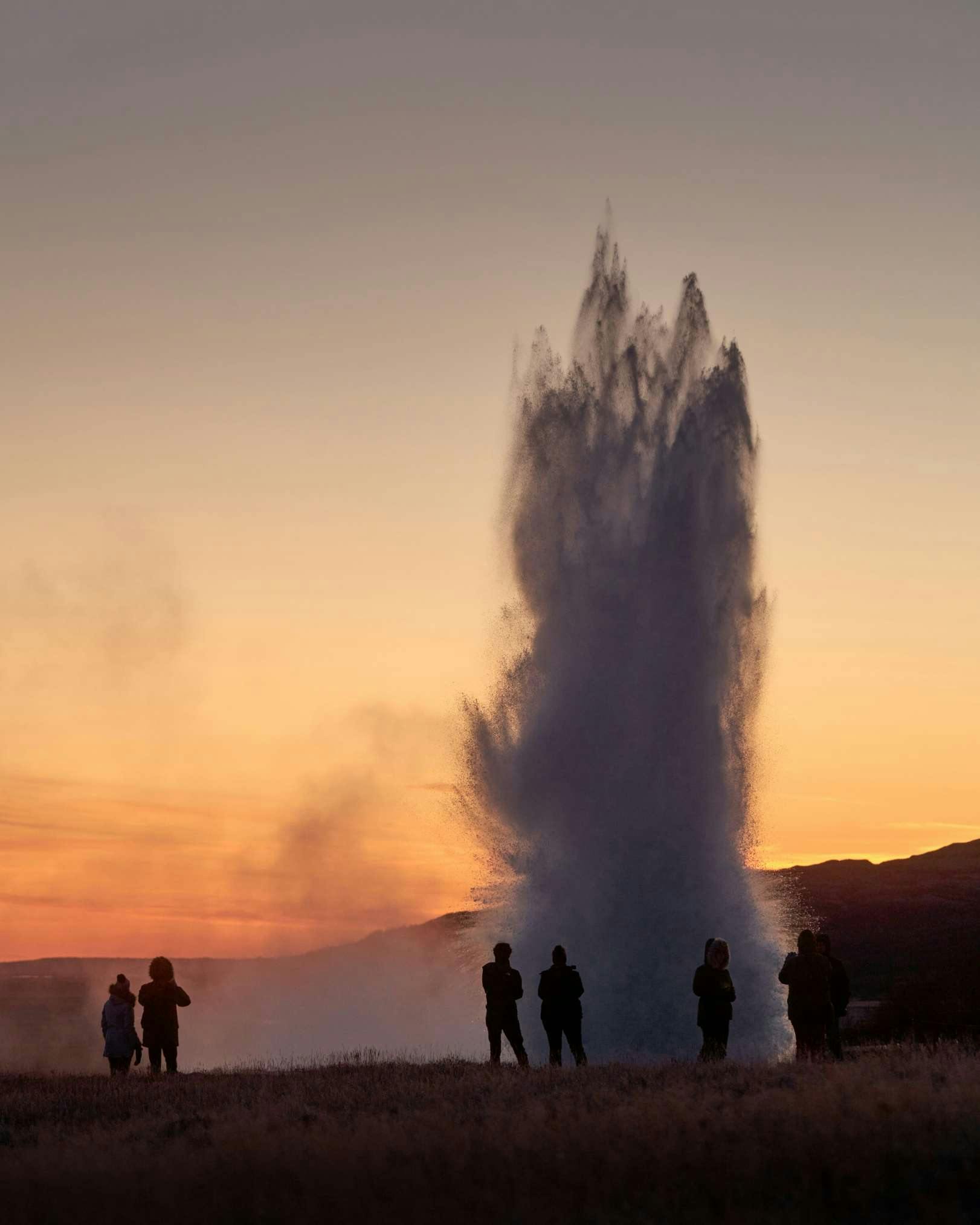
Start Your Iceland Campervan Adventure
Traveling Iceland in a camper isn’t just about transport—it’s about freedom. It’s about sipping fresh coffee outside your van at sunrise, finding a campsite near a glacier, or watching the northern lights from your bed.
With us, your camper rental includes:
- Manual transmission for better control on gravel roads.
- Flexible extras like a sleeping bag, camping experience gear, and power bank options.
- Easy pick-up, flexible drop-off, and always unlimited mileage.
- Support if you need it, with reliable safety features and friendly service.
Whether you’re planning a quick iceland trip or a two-week road trip, we’ll make sure you’re set up for success.
Check out our camper options here and start planning today. Your Iceland adventure is waiting.